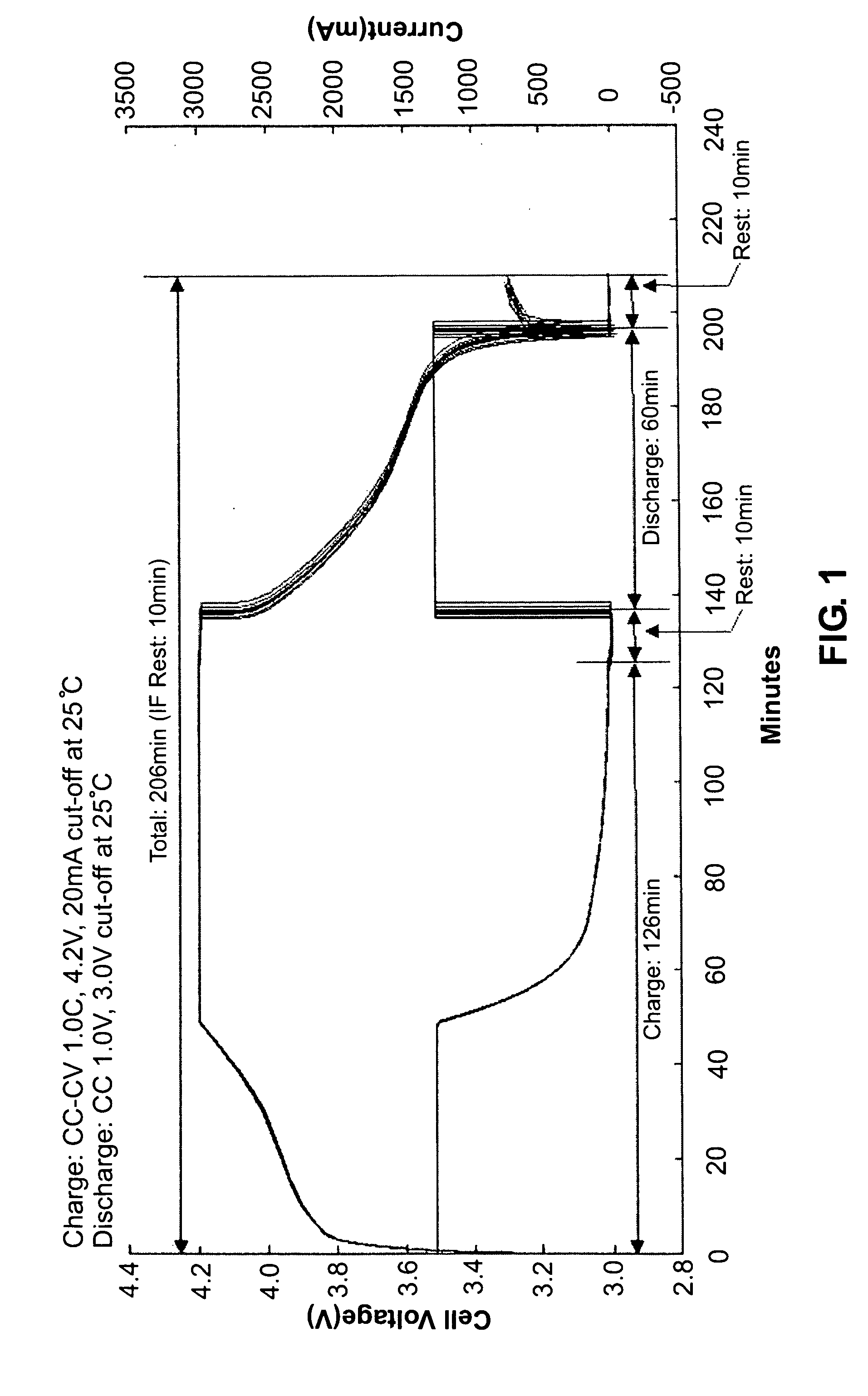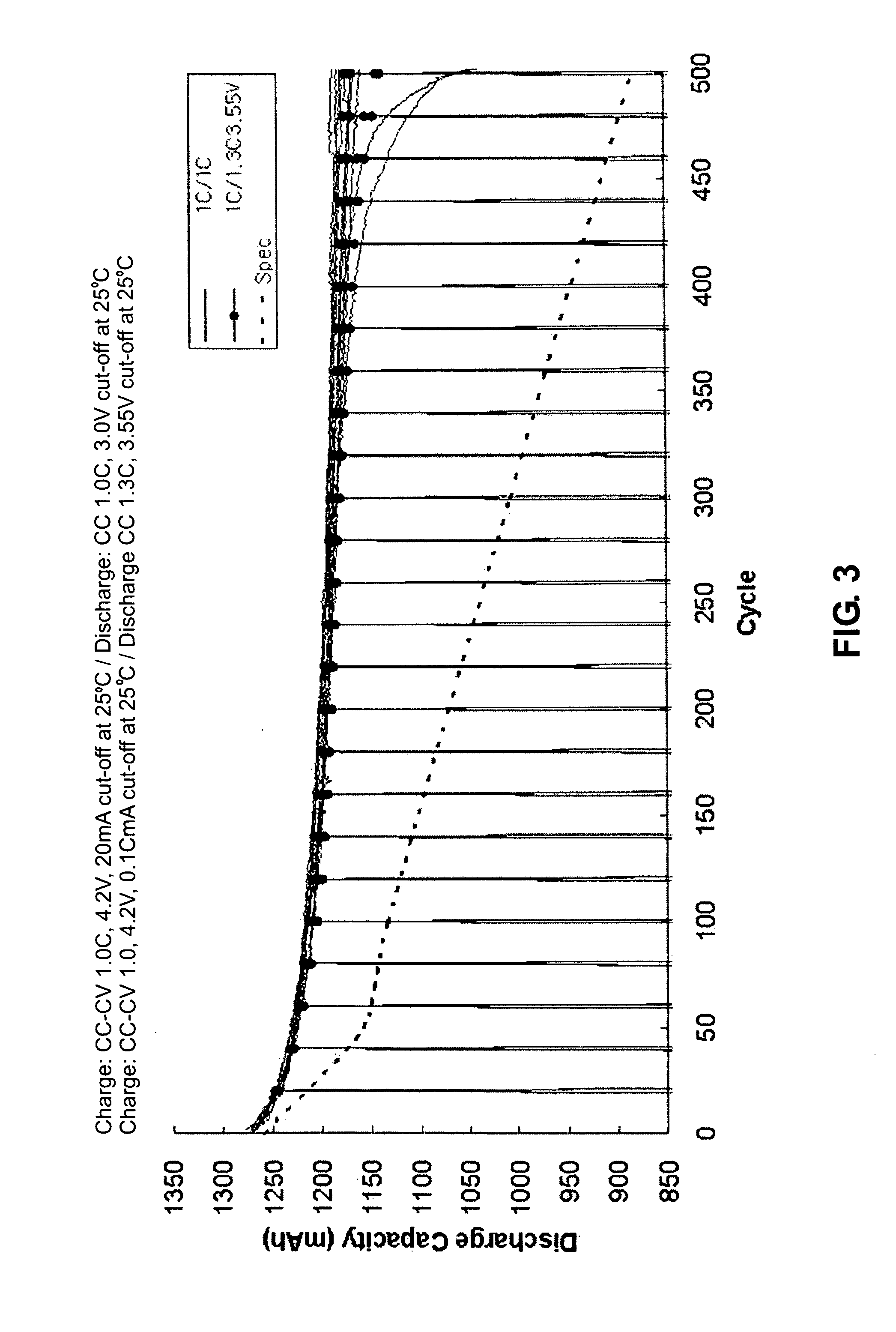Method of testing cycle life of lithium rechargeable battery
a lithium rechargeable battery and cycle life technology, applied in the direction of measurement devices, instruments, transportation and packaging, etc., can solve the problems of reducing the cycle life and charge capacity of lithium rechargeable batteries, affecting the development of new products and the deadline for new tests, and deteriorating battery performance with time. , to achieve the effect of reducing the test tim
- Summary
- Abstract
- Description
- Claims
- Application Information
AI Technical Summary
Benefits of technology
Problems solved by technology
Method used
Image
Examples
embodiment 1
Condition 8 of FIG. 6
[0057]20 days were required for the cycle life test of 500 cycle at a charge rate of 1.5 C, a charge cut-off current of 0.1 C, and no charge and discharge rest period in the regular charge / discharge method.
embodiment 2
Condition 13 of FIG. 6
[0066]41 days were required for the cycle life test of 500 cycle at a charge cut-off current of 0.1 C, a discharge rate of 1.3 C, a discharge cut-off voltage of 3.3V, and no charge and discharge rest period in the regular charge / discharge method.
embodiment 3
Condition 14 of FIG. 6
[0070]32 days were required for the cycle life test of 500 cycle at a charge cut-off current of 0.1 C, a discharge rate of 1.3 C, a discharge cut-off voltage of 3.55V, and no charge and discharge rest period in the regular charge / discharge method.
PUM
 Login to View More
Login to View More Abstract
Description
Claims
Application Information
 Login to View More
Login to View More - R&D
- Intellectual Property
- Life Sciences
- Materials
- Tech Scout
- Unparalleled Data Quality
- Higher Quality Content
- 60% Fewer Hallucinations
Browse by: Latest US Patents, China's latest patents, Technical Efficacy Thesaurus, Application Domain, Technology Topic, Popular Technical Reports.
© 2025 PatSnap. All rights reserved.Legal|Privacy policy|Modern Slavery Act Transparency Statement|Sitemap|About US| Contact US: help@patsnap.com



